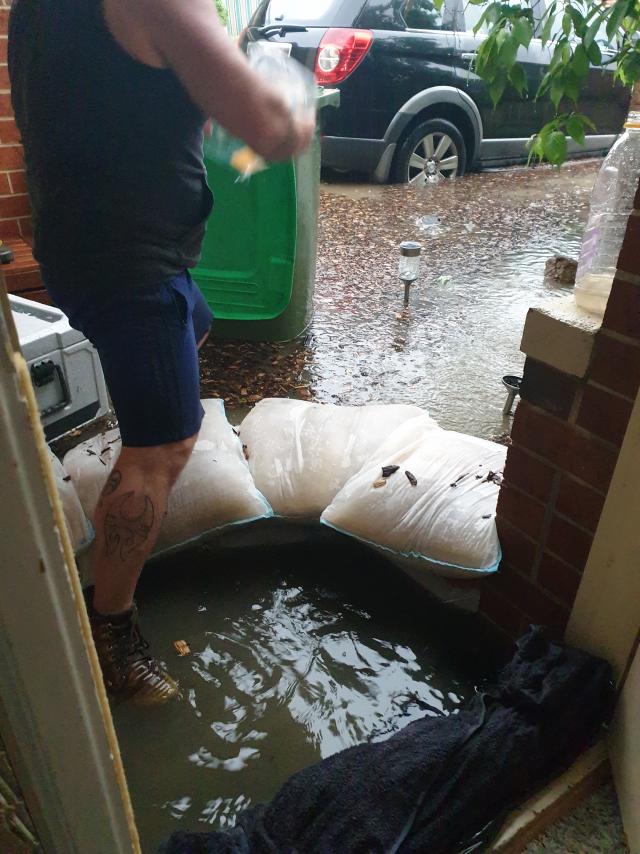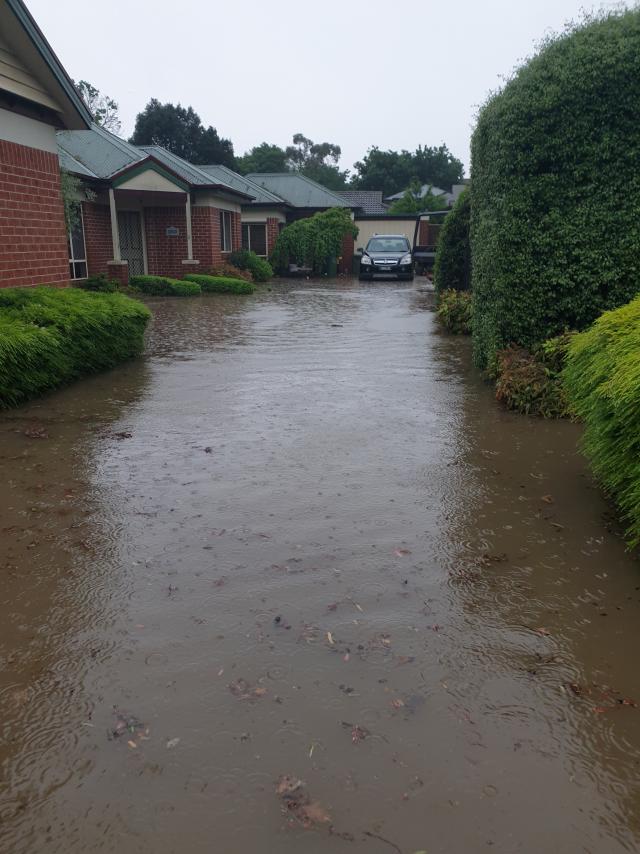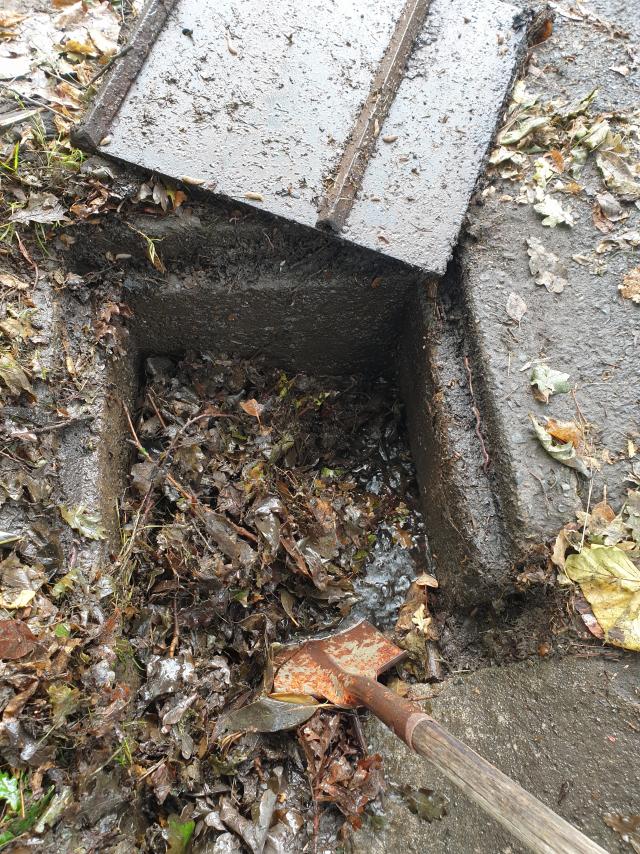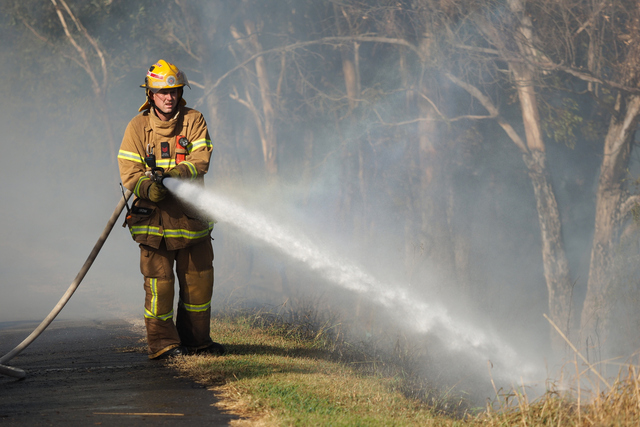Fear and a feeling of disdain is how residents on Chapel Street in Lilydale described the inevitable flooding and inundation issues they continue experiencing because of a lack of drainage upgrades.
Rosemary Mosely has lived in a unit at 26 Chapel Street since 2001. Her first experience of inundation happened in 2002.
Marlene Quigg has lived next door also in a unit at 28 Chapel Street for 13 years and was impacted just six months after moving into her property.
With only one stormwater entry point opposite their properties and only curb and channelling on the Melba Park side of Chapel Street, the trench drainage system overflows and is often blocked by debris from trees and gravel.
“There’s unmade gutters and nothing from the corner [of Clarke Street] except the dip in the land. There’s no continuous drainage to allow the water to get away,” Rosemary said.
The water then pools covering Chapel Street entirely and spilling up the driveways at 26 and 28.
Marlene said all it takes is heavy rain for the street to flood, often seeing her leaving events if the radar is looking ominous to sandbag her front door and unblock one of the drains herself.
“My mom’s 70th birthday was in January and we had a surprise party for it and it rained, and then it got heavier and heavier. I left that,” she said.
“If I hadn’t done that, the drain was blocked and I had to unblock it because we would have flooded that day. It’s just insane.”
Because one particular drain blocks so regularly on the corner of Clarke and Chapel Streets, Marlene said despite putting in requests for it to be cleaned, she finds herself clearing it herself to prevent her home from flooding.
“At this time of the year because we’re coming into autumn the amount of leaves and debris that starts to pile up, I’m forever here every couple of weeks digging it out with a shovel,” she said.
“If I hadn’t done it over the last 13 years, we would have flooded multiple times inside.”
That’s what happened in October 2022.
“All five of our units flooded. The lady in the front unit only got back in there in November last year. So it was a whole year and then she flooded again in January,” Marlene said.
“It was horrendous. I was lucky I had the sandbags at the front door so everybody else had water go through the whole house. We managed to stop it coming through the door and I’ve got shutters at the back so I put them down and that stopped the water coming through the back.
“But because there was so much water pushing up against the house, and we’re on a slab, the water just started coming through the walls.”
Having been requesting for over two decades for something to be done, Rosemary said “you feel sick to the pit of your stomach and you feel so despondent” every time a rain event happens.
“We’d done due diligence down here. When we moved this was to be our home in retirement. We did a lot of planning, a lot of investigation before we moved down here,” Rosemary said.
“We wanted something that was close to public transport that would serve us well in retirement thinking we planned well. Well, a year later we flooded.”
As all the water from Anderson Street, Castella Street and the top end of Chapel Street makes its way towards the Olinda Creek the excess doesn’t have anywhere to go.
But in the 20 years Rosemary has lived in her house, not once has she seen the creek itself overflow or flood into the gravel car park at the base of Chapel Street.
“As these future developments go on and more and more stormwater gets drained into the Olinda Creek it’s just going to get worse and worse,” Rosemary said.
Organising a petition to Yarra Ranges Council, Rosemary sought signatures from residents and businesses from Anderson Street, Main Street and Castella Street and was surprised to hear of the common stories they all shared.
Not only has the structural and financial toll started impacting both Marlene and Rosemary, the mental and emotional side of living in fear of flooding has caused severe stress.
As an elderly resident, in the event of a flood, an ambulance would be unable to get to Rosemary’s address should she need it.
One of Marlene’s sons also has a disability making mobility a challenge, so if they needed to get out quickly it could pose a risk to his health and wellbeing.
In a parliamentary inquiry in July last year into the implications of severe weather events on infrastructure, then Yarra Ranges Council’s executive officer infrastructure maintenance James Lenihan acknowledged the increasing challenges across the waterway system.
“[The Yarra Ranges is] an area that has been impacted heavily by the significant wet weather over the last few years. We’ve also made reference to the environmental conditions; it is an area of very sensitive environmental conditions,” he said.
“We have a significant portion of the Yarra River coming through our municipality. It is impacted significantly by stormwater runoff and is a major focus of where we are able to upgrade our road network, which will include water sensitive urban design elements in order to work collaboratively with Melbourne Water to improve the quality of our waterways.”
Yarra Ranges Council plans to release an updated stormwater plan in the middle of this year.
“Helping the community to understand that stormwater management is not about getting the water away so you don’t have to deal with it. It’s about living with the water, essentially,” Mr Lenihan told the inquiry.
“Helping our residents understand, even in some of our more urban areas, that they have easements within their property, and the expectation is that that means that the water stays underground, but the reality is that, when you have this prolonged period of wet weather or you have the more intense rainfall that we’re experiencing, the nature of the easement is that the water will run above ground.”
Rosemary said because “we have got climate change with us we know these events are going to be more frequent” so the drainage needs to be addressed now.
“It’s so beautiful. We love living here. It’s so nice except when it rains,” Marlene said.










